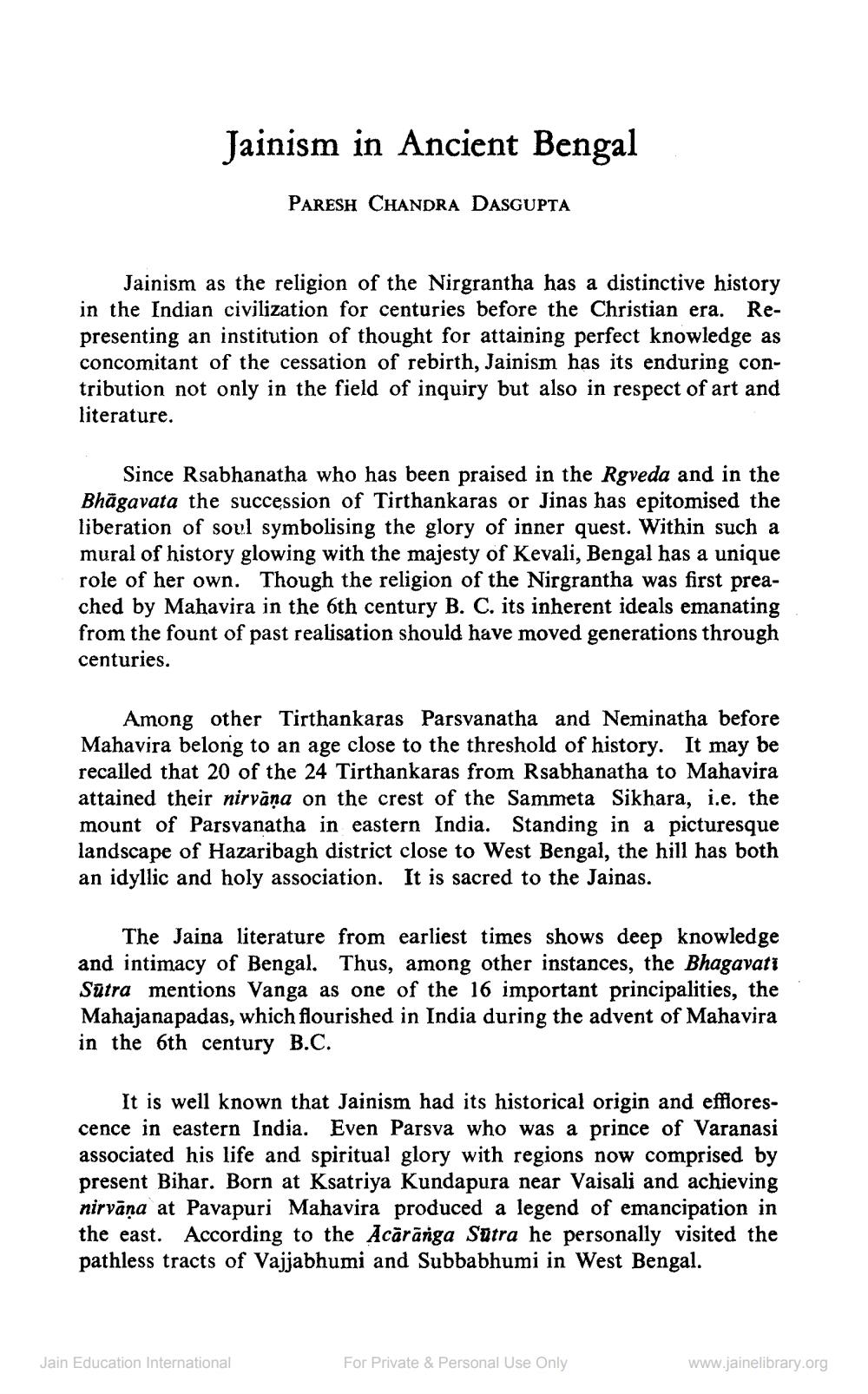________________
Jainism in Ancient Bengal
PARESH CHANDRA DASGUPTA
Jainism as the religion of the Nirgrantha has a distinctive history in the Indian civilization for centuries before the Christian era. Representing an institution of thought for attaining perfect knowledge as concomitant of the cessation of rebirth, Jainism has its enduring contribution not only in the field of inquiry but also in respect of art and literature.
Since Rsabhanatha who has been praised in the Rgveda and in the Bhagavata the succession of Tirthankaras or Jinas has epitomised the liberation of soul symbolising the glory of inner quest. Within such a mural of history glowing with the majesty of Kevali, Bengal has a unique role of her own. Though the religion of the Nirgrantha was first preached by Mahavira in the 6th century B. C. its inherent ideals emanating from the fount of past realisation should have moved generations through centuries.
Among other Tirthankaras Parsvanatha and Neminatha before Mahavira belong to an age close to the threshold of history. It may be recalled that 20 of the 24 Tirthankaras from Rsabhanatha to Mahavira attained their nirvana on the crest of the Sammeta Sikhara, i.e. the mount of Parsvanatha in eastern India. Standing in a picturesque landscape of Hazaribagh district close to West Bengal, the hill has both an idyllic and holy association. It is sacred to the Jainas.
The Jaina literature from earliest times shows deep knowledge and intimacy of Bengal. Thus, among other instances, the Bhagavati Sūtra mentions Vanga as one of the 16 important principalities, the Mahajanapadas, which flourished in India during the advent of Mahavira in the 6th century B.C.
It is well known that Jainism had its historical origin and efflorescence in eastern India. Even Parsva who was a prince of Varanasi associated his life and spiritual glory with regions now comprised by present Bihar. Born at Ksatriya Kundapura near Vaisali and achieving nirvāņa at Pavapuri Mahavira produced a legend of emancipation in the east. According to the Acaranga Sutra he personally visited the pathless tracts of Vajjabhumi and Subbabhumi in West Bengal.
Jain Education International
For Private & Personal Use Only
www.jainelibrary.org




